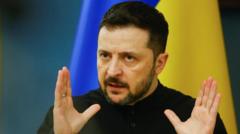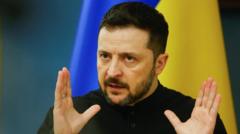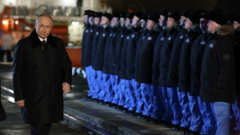President Zelensky expresses cautious optimism over agreements reached in Saudi Arabia, but the pathway to lasting peace remains fraught with challenges.
**Negotiation Progress in Ukraine: Ceasefire Agreement Achieved Amid Uncertainty**

**Negotiation Progress in Ukraine: Ceasefire Agreement Achieved Amid Uncertainty**
A recent diplomatic breakthrough raises hopes for a ceasefire between Ukraine and Russia, albeit with significant caveats.
After three days of intense negotiations in Saudi Arabia, Ukraine and Russia, facilitated by the United States, made notable strides towards a ceasefire agreement. Separate accords were crafted, one between the U.S. and Russia and another between the U.S. and Ukraine, revealing both common interests and notable differences. The agreements emphasize the need for secure navigation in the Black Sea, preventing military usage of commercial vessels, and prohibiting strikes on energy facilities from both nations. President Zelensky expressed disappointment over the absence of a direct ban on attacks against civilian infrastructure but indicated that Ukraine would commence implementation of the Black Sea and energy ceasefires.
However, the situation grew more complex with the release of a third document from the Kremlin introducing new conditions. The Kremlin declared that the ceasefire would only commence once sanctions against Russian entities related to agriculture and shipping were lifted, thus revealing their intention to leverage the situation for economic concessions. The proposal signals a reinterpretation of the earlier Black Sea Grain Initiative, suggesting an eagerness to not only reinstate it but also to negotiate the repeal of substantial economic restrictions. The timeline for fulfilling these demands remains uncertain, as changes would likely require coordinated efforts, including EU input.
Additionally, the Kremlin's stipulation for a 30-day halt on energy strikes, retroactively starting from March 18, leaves room for suspension should either side breach the agreement. This precarious arrangement underscores the fragile nature of the current discussions, which, although a step towards reducing hostilities, do not guarantee enduring compliance or peace. In essence, while the announcements denote progress, the true test will lie in the execution of the agreements. The forthcoming actions of both sides will reveal their genuine intentions: whether they seek a lasting truce or if they intend to exploit the negotiations to enhance their military positions. As history shows, ceasefires are often intricate processes that demand diligent, sustained commitment from all parties involved.



















